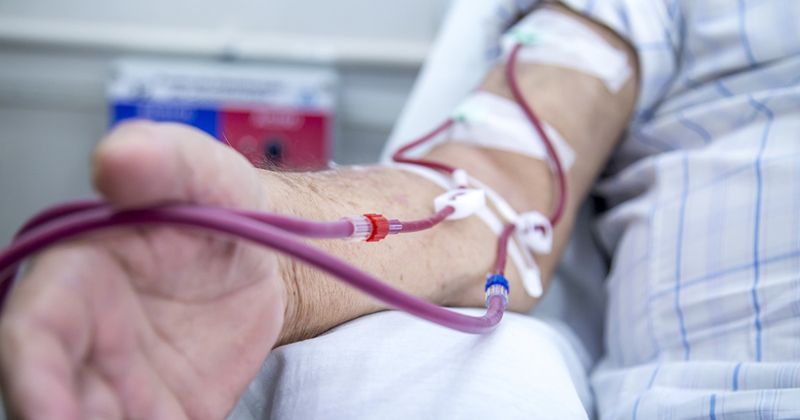Home hemodialysis confers lower mortality, technique failure risks vs peritoneal dialysis
A study conducted in Canada found patients who initiated kidney replacement therapy with home hemodialysis experienced lower risks for both mortality and treatment failure compared with those who had peritoneal dialysis.
“As interest toward home dialysis increases in Canada and internationally, the dilemma about whether to initiate with peritoneal dialysis (PD) or home hemodialysis (HHD) is commonplace,” Annie-Claire Nadeau-Fredette, MD, of Hôpital Maisonneuve-Rosemont in Montréal, and colleagues wrote. “Eligibility criteria for treatment with HHD has also expanded with consideration of this modality for more vulnerable patients, including those with higher comorbidity burden and older age. However, the comparative outcomes of incident PD and HHD remain uncertain due to the availability of only a limited number of studies, which have yielded conflicting results ranging from a nearly 50% lower mortality risk with HHD compared to PD in an Australia and New Zealand Dialysis and Transplantation (ANZDATA) registry study to similar mortality in an incident U.S. home dialysis study.”

Adding that these studies have also not examined patient and technique survival with each modality over time, Nadeau-Fredette and colleagues compared outcomes between 959 patients on HHD and 15,469 on PD, dividing cohorts based on era of initiation (2000 through 2013).
The primary outcome of the study was mortality. The secondary outcome was treatment failure, which the researchers considered to be the composite of technique failure (defined as transfer to any other modality for 90 consecutive days) and mortality (during home dialysis or within 90 days of transfer to another modality).
Study results indicated that, compared with incident PD, incident HHD was associated with a 36% lower risk for mortality (adjusted hazard ratio [aHR] = 0.64) and a 48% lower risk for treatment failure (aHR = 0.52).
Further findings showed the lower risks for mortality with HHD were more pronounced for older cohorts (adjusted HR of 0.47 for the 2000 to 2005 era vs. 0.70 in the 2006 to 2010 cohort) and there was no significant difference between HHD and PD groups in the most recent era (2011 to 2013, aHR = 0.86).
“Changes in HHD patients’ characteristics as HHD programs have become more confident with the modality and expanded may have underpinned the apparent convergence of outcomes between HHD and PD patients in more recent times,” the researchers theorized, adding that the findings could be related to “the inclusion of higher acuity patients in HHD programs over time and simultaneous improvement in PD technique and patient survival.”
Nadeau-Fredette and colleagues suggest further research be done to confirm the results in other contemporary cohorts.
